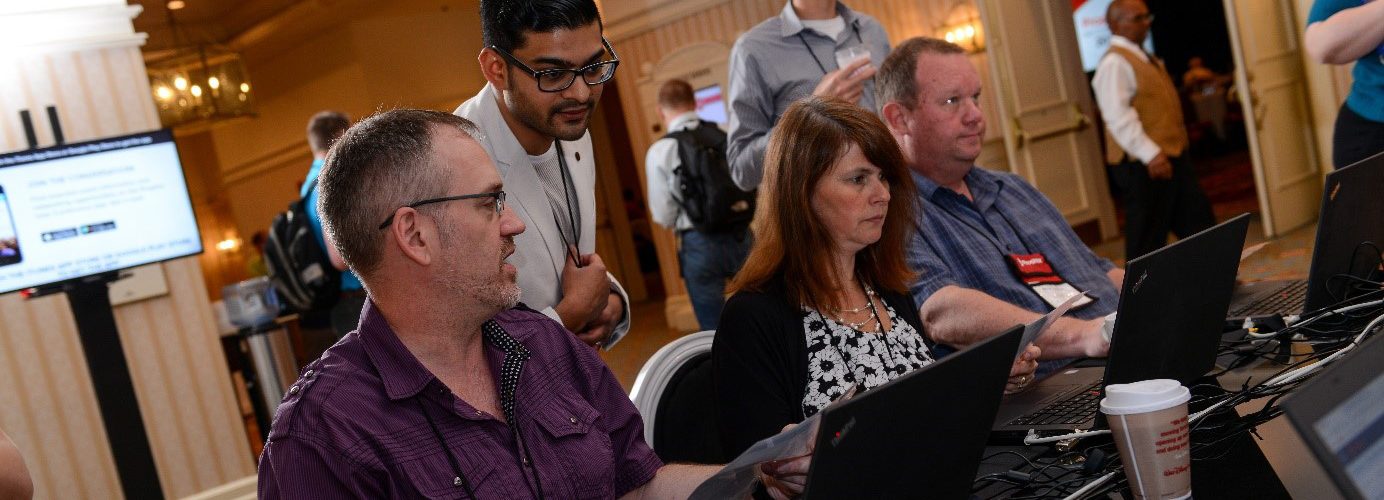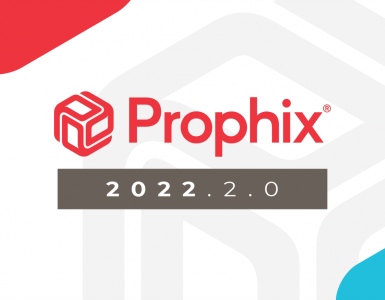 Jacob Joseph is the Director of Product Management at Prophix. Jacob functions as an intermediary between Marketing and Development, with the User Experience team reporting directly to him. One of his main tasks is gathering marketing requirements and converting them into technical requirements for the Development team.
Jacob Joseph is the Director of Product Management at Prophix. Jacob functions as an intermediary between Marketing and Development, with the User Experience team reporting directly to him. One of his main tasks is gathering marketing requirements and converting them into technical requirements for the Development team.
Michael: Jacob, what is “User Experience” (UX)?
Jacob: User Experience is the combination of everything a person feels in response to using a product or service, be it positive or negative. When you actively try to shape the User Experience, you’re talking about UX Design. That is exactly what we do at Prophix to provide users with relevant experiences and intuitive interactions.
Michael: Prophix didn’t always have a UX team. What has changed to make UX more of a priority?
Jacob: We now have companies like Facebook or Instagram that are focusing more on “look and feel,” and are trying to have people use their software more frequently. Business software also evolves along this path; you’ll find that people will expect the same kinds of experiences from their business applications as they would from their B2C applications.
That is why today’s software is very different from what it was like 10 or even 20 years ago. Back then, it was good enough to simply solve a problem for a particular user, even if the interface looked awful. That doesn’t cut it anymore. Today, business software still needs to solve problems but it should also be pleasing to the eye. It should have the same standards as software for personal use. I don’t think it’s fair to users to say, “you’re using business applications, so it can be ugly.” Our goal is to create experiences that make users happy. We want to delight our users and that’s why we have such a strong focus on user experience.
Michael: So, what you’re saying is people should be able to do what they need to do as part of their jobs, but it should also be fun?
Jacob: I’m not sure if “fun” is the word I would use, but it should be enjoyable, yes. It definitely shouldn’t be a burden to use.
Michael: That’s an excellent segue into all the awards Prophix has recently received. They all paint a picture of above-average customer satisfaction, especially with regards to user experience. Is that something you and your team take note of at all or are you hearing about this for the first time?
Jacob: [Laughs] Yeah, I did hear about these awards. Sometimes I feel like we’re so busy concentrating on the future and what we’re going to do next with Prophix that it’s good to focus on where we are right now and what we’ve accomplished.
We love hearing that customers are benefitting from what we’re creating. That is probably the biggest compliment we could receive, and it’s the reason why we work so hard. We work for the users. If they are happy with the experience, it means we did a good job understanding their problems and how to address them – and hopefully, we can keep doing that. With that being said, we love to receive accolades, but we also love hearing what people don’t like so we can keep making the product better.
Michael: Is that also the impression you have when attending the Prophix Conference? Do customers ever tell you how happy they are with the software?
Jacob: Yes, absolutely – it happens all the time. I’m not sure if this is unique to our conference, but I have very similar experiences to my colleagues here at Prophix. When I talk to a user, a lot of the time they will tell me all the things they love about working with us. After they find out that I work in Product, they also say “I’d like to get this done, and this.” In general, I feel like people who attend our Conference are very happy with what they’re receiving. I love talking to customers and it’s a great opportunity to talk to them.

Michael: The Prophix Conference usually happens in the Spring. Do you talk to Prophix users the rest of the year?
Jacob: We interview users throughout the year, asking them about how they’re using the software, what they would like to change and so on. We also talk about upcoming features so that they can give us their feedback – that’s really what we are using to develop software here. We want to make sure we keep our connection with the market we are serving. Staying in contact with the users helps us make good design decisions.
Michael: It sounds like a lot of what ends up in the software originates from customers.
Jacob: Correct – an idea that we take into the product can come from anywhere, as long as we can articulate the value that it is going to provide. When we decide whether an idea is turned into a product feature, we try to focus on the value this addition would bring. To determine this, we ask questions like “is this going to save people time in their day-to-day?” or “can we automate processes our users don’t take joy in doing?” We try to focus on the users when we pull those features in, but those ideas can come from anywhere. For instance, I wouldn’t dismiss an idea simply because it didn’t come from a customer. In the end, if we can make people’s lives easier by adding a new feature, we will do just that.
Michael: You probably receive an enormous number of requests then. How do you decide which of these ideas will be worked on, and which will have to wait or even be discarded?
Jacob: That is true. While we do try our best to listen to everyone, there are only so many hours in the day, so we have to prioritize. There are a few criteria we use to decide whether or not something is put into the product, but ultimately, we want to ensure that whatever we are adding is creating the most benefit for the largest number of users. That’s the prime method we use to determine what goes into the software.
Michael: What happens if somebody submits a really particular request that will only impact a tiny fraction of users?
Jacob: Sometimes we do get ideas that are outside of our target market. We probably wouldn’t focus on that, and we would be upfront about it. I would never say “oh, that’s a great idea” and then cross it off the list. That’s not how we work. We would definitely tell the respective user why we think their idea does not match our vision for the product.
Michael: It seems you go out of your way to speak to customers and try to keep the conversation going. Has there ever been a time where you didn’t have a constant flow of requests coming in?
Jacob: No, never – and I think that’s because different customers start their Prophix projects at different times, and each customer is at a different part of their journey in the Corporate Performance Management (CPM) space. So, as people use the software, everyone is going to ask for something new and different as they grow… so you end up getting requests, all the time.
On top of that, we also use our feedback forum to capture ideas. We even speak to the people who work in the field and they will come back to us and let us know how business requirements could be interpreted as product functionality. We do try to use any connection we have to market to understand what people are asking for. We get very busy around release time, but in general, feedback is consistent and there no slow time of the year for us. Our market is still growing, people are still asking for things that they’d like to see in the product.
Michael: Looking at the results from all those surveys, I think your work is much appreciated by the customers and I hope it will continue to be. Thanks a lot for your time.






